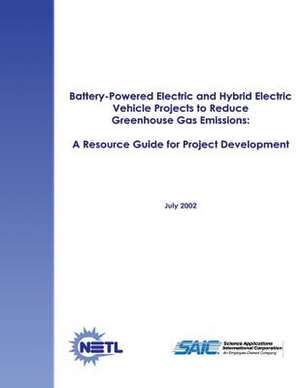Battery-Powered Electric and Hybrid Electric Vehicle Projects to Reduce Greenhouse Gas Emissions
Autor U. S. Department of Energy, National Energy Technology Laboratory Contribuţii de Science Applications Intern Corporationen Limba Engleză Paperback
Preț: 136.65 lei
Nou
Puncte Express: 205
Preț estimativ în valută:
26.15€ • 28.40$ • 21.97£
26.15€ • 28.40$ • 21.97£
Carte disponibilă
Livrare economică 01-15 aprilie
Preluare comenzi: 021 569.72.76
Specificații
ISBN-13: 9781482613537
ISBN-10: 1482613530
Pagini: 108
Dimensiuni: 216 x 280 x 6 mm
Greutate: 0.27 kg
Editura: CREATESPACE
ISBN-10: 1482613530
Pagini: 108
Dimensiuni: 216 x 280 x 6 mm
Greutate: 0.27 kg
Editura: CREATESPACE
